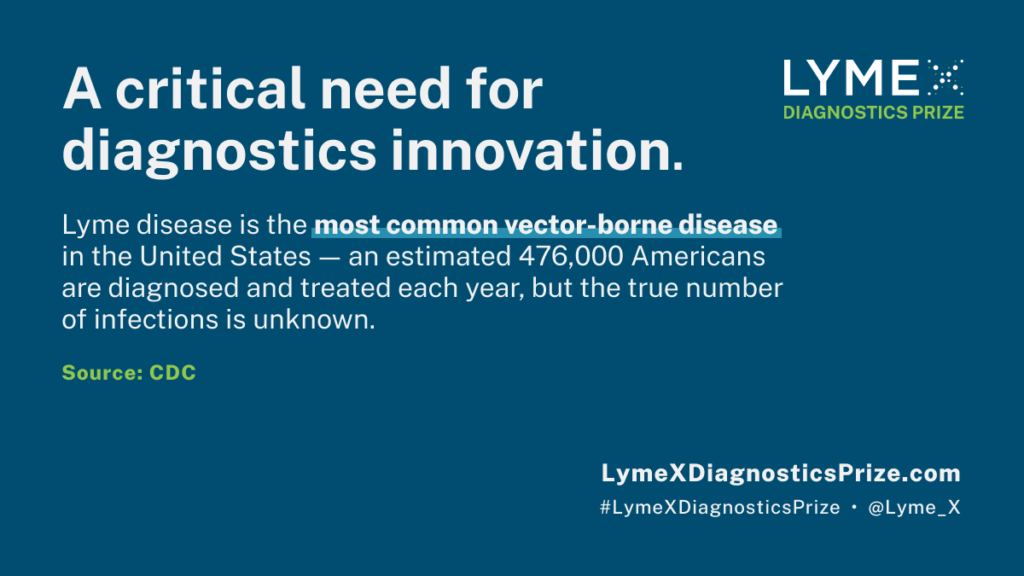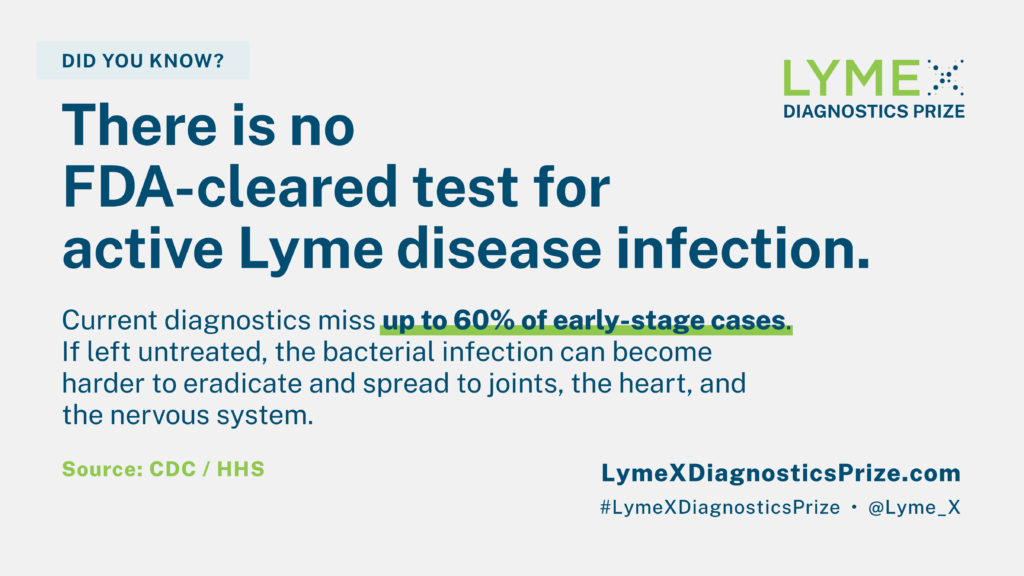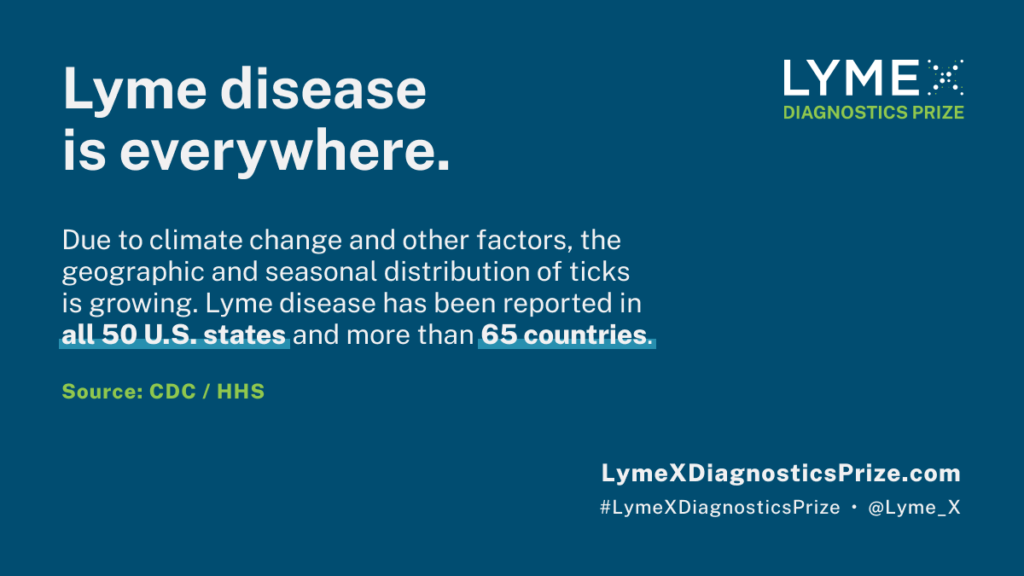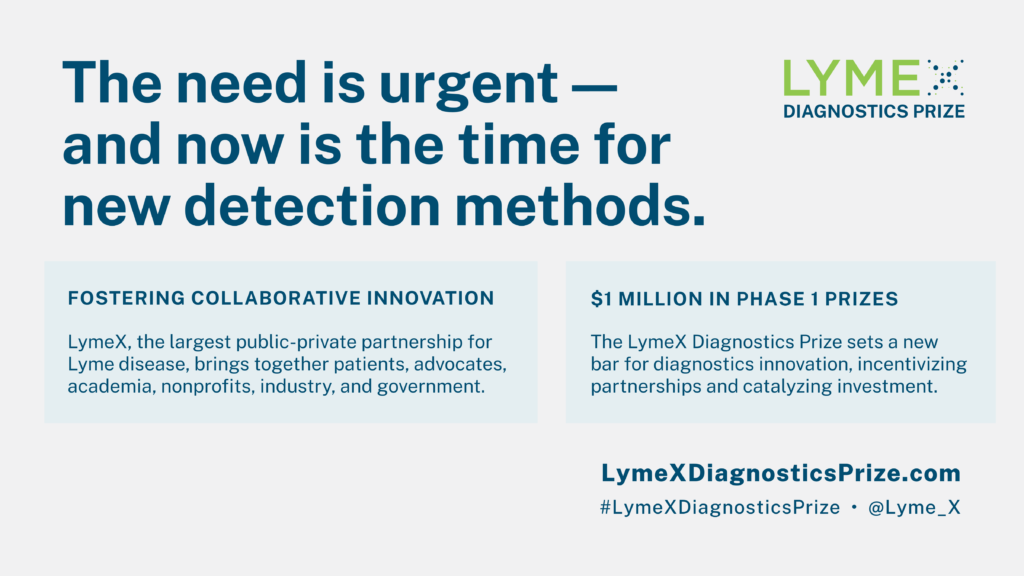An estimated 476,000 Americans are diagnosed and treated for Lyme disease each year, but the true number of infections is unknown. The genome of Lyme disease-causing spirochetes has been described as the most complex of all bacteria, and developing direct diagnostic tests is extremely difficult. With the LymeX Diagnostics Prize bringing together patients, advocates, academia, nonprofits, philanthropy, industry, and government to answer this growing need, here are four things to understand about this growing problem.
1. Lyme disease is the most common vector-borne disease in the United States.

From plague to malaria, vector-borne diseases — infections transmitted by vectors, such as mosquitoes, ticks, and flies — have been around for thousands of years. Together, they account for 17% of all infectious diseases and cause more than 700,000 deaths annually worldwide.
With an estimated 476,000 cases annually, Lyme disease is by far the leading vector-borne disease in America. Other vector-borne diseases reported in the United States — including Zika, West Nile virus, dengue, and Rocky Mountain spotted fever — typically appear in limited outbreaks or have drastically fewer cases.
2. FDA-cleared tests cannot detect cases of active infection.

The current diagnostic process is significantly limited; it relies on a characteristic bulls-eye skin rash called erythema migrans or the CDC-recommended two-tiered antibody testing algorithm. Up to 30% of patients will never present the rash, and research suggests that medical staff may disproportionately miss it on patients of color. The two-tier antibody testing system — originally developed in 1994 for disease surveillance, not as a stand-alone diagnostic test — relies on the presence of antibodies and can only be used accurately four to six weeks after infection.
Early diagnosis of Lyme disease is critical. If left untreated, the debilitating disease can become harder to eradicate and spread throughout the body. Better diagnostics yield better information, which yields better decisions and responses.
3. Lyme disease is already prevalent across the United States — and continues to spread.

Since 1995, reported cases have tripled as climate change increases the geographic and seasonal distribution of ticks across the United States. Ecological transformations — particularly the loss of natural deer predators — have likewise allowed infected ticks to thrive in suburban habitats.
Our understanding of current prevalence relies on reported cases, but active surveillance requires active data — and the gap in testing capabilities is clear. If experts can measure the problem and understand how big it is, they are one step closer to solving it.
4. Innovation in diagnostic testing is possible now.

The last few years have taught us the importance of diagnostics innovation — and now it’s time to bring that momentum to Lyme disease. The LymeX Diagnostics Prize will set a new bar for innovation in disease diagnostics, incentivizing transformative partnerships and catalyzing additional investment.
With the geographic range and seasonal distribution of mosquitoes, ticks, and flies only continuing to increase, vector-borne diseases remain a growing threat to Americans. Spurring innovation in Lyme disease diagnostics will support critical advancements in testing for other diseases — leading to better options in treatment and improving outcomes for millions of patients.
Learn more at the Phase 1 virtual information session
To hear from the LymeX team and ask questions, interested entrants are encouraged to register for the June 16 virtual information session. Following the session, a recording and summary of questions and answers will be published on LymeXDiagnosticsPrize.com.
Enter the LymeX Diagnostics Prize
Submit detailed concepts and plans for development of innovative detection methods by 4:59 p.m. ET on August 8, 2022. The Phase 1 winners will receive an equal share of the $1 million Phase 1 prize pool and be invited to participate in a planned Phase 2.
To receive all competition updates, subscribe to the LymeX Diagnostics Prize newsletter and follow @Lyme_X on Twitter.
